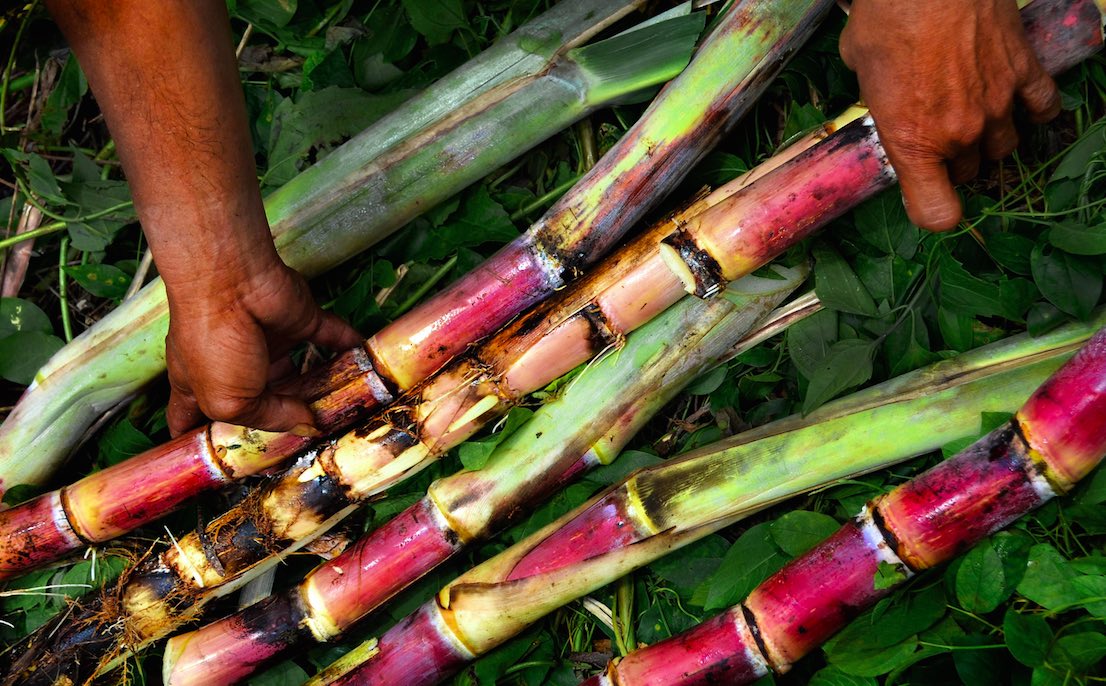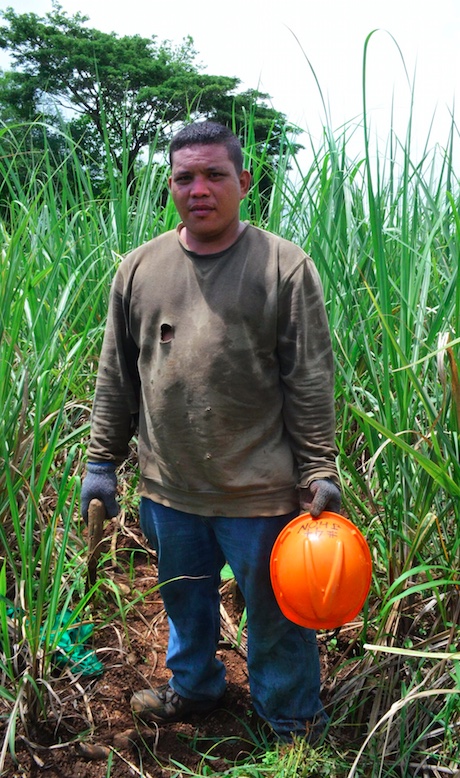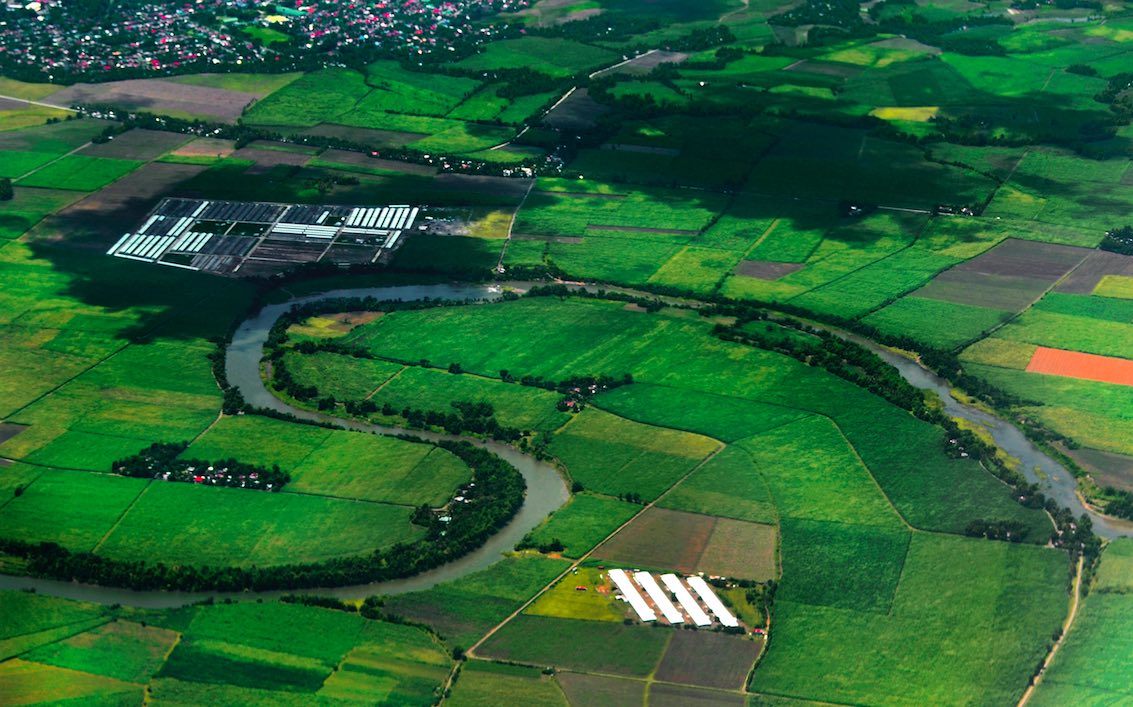 What will you eat or drink during the holiday season?
What will you eat or drink during the holiday season?
Cola? Coffee? Cake? Chances are, it’s crammed full of sugar. The world annually produces about 9 million dump trucks worth of it, while the average person consumes 50 pounds of it. But is it a sweet deal for the sugarcane farmers who work the hardest to get it?
Clutching a sickle, farmer John Godinez dons a battered orange helmet and enters a field of razor-sharp grass 6 feet high.
It’s nearly Christmas, but he’ll spend the holidays alone. In the endless sprawls of sugarcane blanketing Negros Occidental, 300,000 farmers like him till the land for the sweetest crop of them all.
The World Wide Fund for Nature (WWF) recently joined him to experience the life of the sacada.
Scything weeds under the sun is a stifling work. Sometimes the wind wheezes through the grass-blades, making them sing.
“We’ll each get about P500 for weeding a hectare of land. Life is tough. I’ve been doing this for 20 years, but I can’t still afford to raise a family. I’ll spend Christmas alone again,” Godinez said.
Once dominated by elite landlords called hacienderos and held back by difficulty in securing farm loans, sugarcane farmers haven’t had a sweet deal – but some programs aim to change their situation in 2017.

Agricultural sustainability
Known by many Filipinos as tubo, sugarcane (Saccharum officinarum) isn’t far different from the wild talahib (Saccharum spontaneum) lining many fields across the country. It’s just grass but it changed the world. About 30 Philippine mills convert canes into raw sugar, while 12 refineries process raw sugar into the refined sugar we’re familiar with.
In 2012, the country produced 2.5 million metric tonnes of sugar, valued at P70 billion. Negros Occidental alone supplies half of this.
To improve the lives of smallholder sugarcane farmers, WWF and its allies are working to transforming the trade in sugarcane, plus coffee, pineapple, rice, and onion.

To ensure the sustainability of sugar production, we partnered with a wide host of entities including the Bank of the Philippine Islands, Department of Agriculture, Department of Agrarian Reform, the Multi-sectoral Alliance for Development, and many other groups.
“Our goal is to produce more sugar using less resources,” according to MUAD Executive Director Reynic Alo.
“Whereas a typical sugarcane plot produces from 50 to 70 metric tonnes per hectare, new practices can double output. As opposed to the usual planting of sugarcane in ordered rows, we pilot-tested a new "hole system" using evenly-spaced 40-centimeter deep holes planted with 4 sugarcane tops," Alo said.
Through proper upkeep and plant nutrition, this new system might generate upwards of 100 tonnes per hectare. If we want to compete with sugar giants like Brazil and Thailand, we need to innovate, he added.
Farm assistance
Project partner Roxas Holdings Incorporated (RHI) is providing technical farm assistance to enlisted farm cooperatives, while pushing for sustainable farming practices. The company is also helping identify alternative crops and livestock to tide farmers through the dreaded tiempo muerto– the low-season from April to August, when farmers must patiently wait for the sugarcane to grow to harvestable sizes.
Another partner, Magsasaka at Siyentipiko Para sa Pag-unlad ng Agrikultura (MASIPAG), has been teaching small-scale farmers to go organic.
“Organically-grown sugarcane is far more resilient to pests and disease, mainly because their stems grow thicker. We teach farmers to avoid chemical pesticides and to diversify their crops to tide them through the tiempo muerto– the period between planting in April and harvesting in August. Our farmers grow not just sugarcane, but also rice, vegetables, plus livestock like chickens and hogs,” MASIPAG Officer Genrelyn Jalico said.
“There’s also an ever-growing market for organic goods, which ironically can be sold at better prices than processed products. Organic muscovado sugar for example, can be sold for PHP60 per kilo, while processed white sugar sells for about PHP40 per kilo,” Jalico added.
WWF-Philippines Project Manager Monci Hinay noted that despite the country’s ever-growing demand for food, most of our farmers remain poor.
"We’re working with many allies in both Negros Occidental and Batangas to gather and share best practices for growing and processing low-impact but high-yield sugarcane. We’re transforming lives through better farming solutions,” he said.

Ovecoming challenges to sugar industry
The Philippine agriculture sector accounts for 40% of the economy but emits 30% of the country’s greenhouse gases, fueling dangerous climate change. Floods, droughts, diseases, and other climate change effects can cripple farmland.
“Water use, soil erosion, land conversion, pesticides and pollution must all be addressed to ensure agricultural sustainability. How can we feed ourselves if our natural systems can no longer support crops?” Hinay asked.
There are many challenges facing the country’s sugar industry, which has been on the decline since the 1970s and is now threatened by an avalanche of cheap imported sugar. With better financing, education and innovation, the Philippine sugar industry can again rise and offer better tidings to its farmers.
Back in the blistering sugarcane field, our day’s work is done. We seek shade and break bread under a clump of swaying bamboo. I have a newfound respect for Negros Occidental’s sugarcane farmers, who stand tall and tough – just like the canes they harvest.
Yes, the Negros sugarcane industry has for 300 years been a bittersweet symphony, but if new ways of farming and financing take root, then next Christmas, John might finally enjoy holiday sweets with his new family. – Rappler.com
Gregg Yan, an award-winning communicator for the World Wide Fund for Nature (WWF-Philippines), writes about environmental and anthropological issues in Asia. Voted as the Asia-Pacific region’s top advocacy communicator for 2016, he spent days toiling with the sugarcane farmers of Negros Occidental for this report.